
Mount Shasta is a potentially active volcano at the southern end of the Cascade Range in Siskiyou County, California. At an elevation of 14,179 feet, it is the second-highest peak in the Cascades and the fifth-highest in the state. Mount Shasta has an estimated volume of 85 cubic miles, which makes it the most voluminous stratovolcano in the Cascade Volcanic Arc. The mountain and surrounding area are part of the Shasta–Trinity National Forest.

Siskiyou County is a county in the northernmost part of the U.S. state of California. As of the 2020 census, the population was 44,076. Its county seat is Yreka and its highest point is Mount Shasta. It falls within the Cascadia bioregion.

Redding is the economic and cultural capital of the Shasta Cascade region of Northern California and the county seat of Shasta County. Redding lies along the Sacramento River, 162 miles (261 km) north of Sacramento, and 120 miles (190 km) south of California's northern border with Oregon. Its population is 95,542 as of the 2022 census, up from 89,861 from the 2010 census.
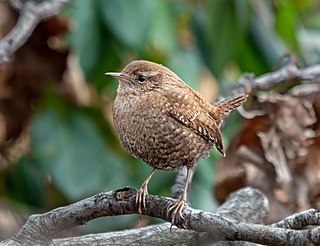
The winter wren is a very small North American bird and a member of the mainly New World wren family Troglodytidae. It was once lumped with the Pacific wren of western North America and the Eurasian wren (Troglodytes troglodytes) of Eurasia under the name winter wren.
A troglodyte is a human cave dweller, from the Greek trogle 'hole, mouse-hole' and dyein 'go in, dive in'.
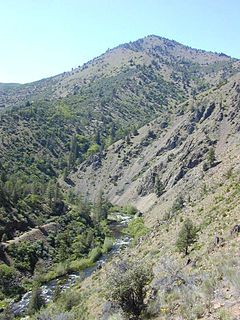
The Shasta River is a tributary of the Klamath River, approximately 58 miles (93 km) long, in northern California in the United States. It drains the Shasta Valley on the west and north sides of Mount Shasta in the Cascade Range.

Shasta Lake, also popularly known as Lake Shasta, is a reservoir in Shasta County, California, United States. It began to store water in 1944 due to the impounding of the Sacramento River by Shasta Dam, the ninth tallest dam in the United States.
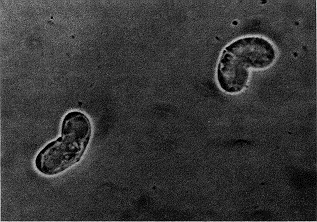
Ceratonova shasta is a myxosporean parasite that infects salmonid fish on the Pacific coast of North America. It was first observed at the Crystal Lake Hatchery, Shasta County, California, and has now been reported from Idaho, Oregon, Washington, British Columbia and Alaska.

Castle Crags is a dramatic and well-known rock formation in Northern California. Elevations range from 2,000 feet (610 m) along the Sacramento River near the base of the crags, to over 6,500 feet (2,000 m) at the summit of the tallest crag.
The Trinity bristle snail is a species of medium-sized land snail, a terrestrial pulmonate gastropod mollusc in the family Monadeniidae.
The Shastan peoples are a group of linguistically related indigenous peoples from the Klamath Mountains. They traditionally inhabited portions of several regional waterways, including the Klamath, Salmon, Sacramento and McCloud rivers. Shastan lands presently form portions of the Siskiyou, Klamath and Jackson counties. Scholars have generally divided the Shastan peoples into four languages, although arguments in favor of more or less existing have been made. Speakers of Shasta proper-Kahosadi, Konomihu, Okwanuchu, and Tlohomtah’hello "New River" Shasta resided in settlements typically near a water source. Their villages often had only either one or two families. Larger villages had more families and additional buildings utilised by the community.
Shasta is a census-designated place (CDP) in Shasta County, California, United States. Shasta sits at an elevation of 843 feet (257 m). Its population is 1,043 as of the 2020 census, down from 1,771 from the 2010 census.
The Shasta salamander is a species of salamander in the family Plethodontidae. It is endemic to Shasta County in California.
Chamalycaeus is a genus of tropical land snails with an operculum, terrestrial gastropod mollusks in the family Alycaeidae.

Monadenia is a genus of air-breathing land snails in the subfamily Monadeniinae.

Monadeniinae is a taxonomic subfamily of small to medium-sized air-breathing land snails, terrestrial pulmonate gastropod mollusks in the family Xanthonychidae
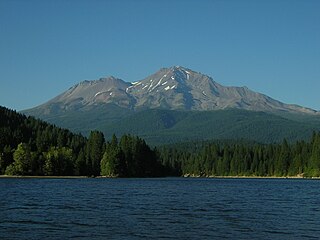
The Mount Shasta Wilderness is a 38,200-acre (155 km2) federally designated wilderness area located 5 miles (8.0 km) east of Mount Shasta City in northern California. The US Congress passed the 1984 California Wilderness Act that set aside the Mount Shasta Wilderness. The US Forest Service is the managing agency as the wilderness is within the Shasta-Trinity National Forest. The area is named for and is dominated by the Mount Shasta volcano which reaches a traditionally quoted height of 14,162 feet (4,317 m) above sea level, but official sources give values ranging from 14,104 feet (4,299 m) from one USGS project, to 14,179 feet (4,322 m) via the NOAA. Mount Shasta is one of only two peaks in the state over 14,000 feet (4,300 m) outside the Sierra Nevada Mountain Range. The other summit is White Mountain Peak in the Great Basin of east-central California.
Sabinella troglodytes is a species of small sea snail, a marine gastropod mollusk in the family Eulimidae. It is a parasitic snail found near the coast of Brazil which lives on the body of the slate pencil urchin Eucidaris tribuloides.
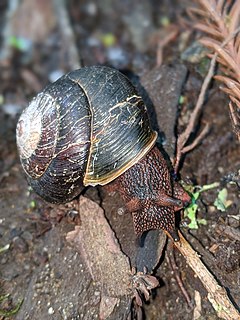
Monadenia infumata, the redwood sideband snail, is a species of land snail found on the Pacific coast of the United States.

The Samwel Shasta salamander is a species of salamander in the family Plethodontidae. It is endemic to Shasta County in California.













